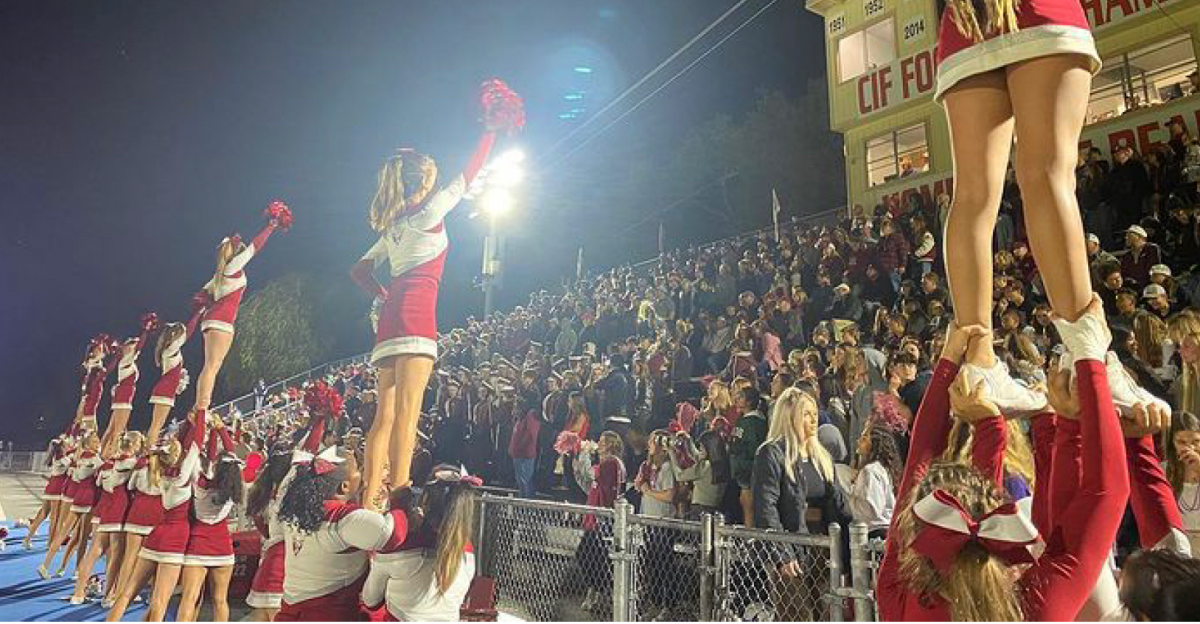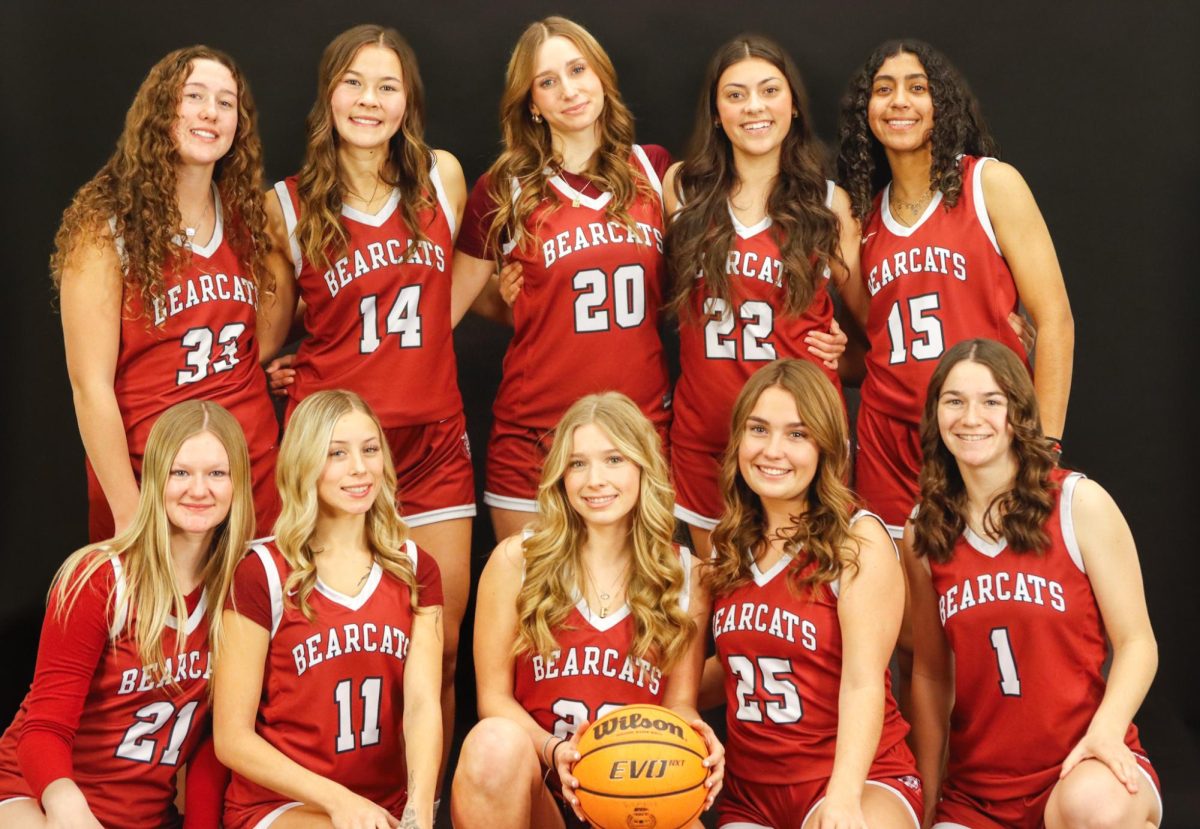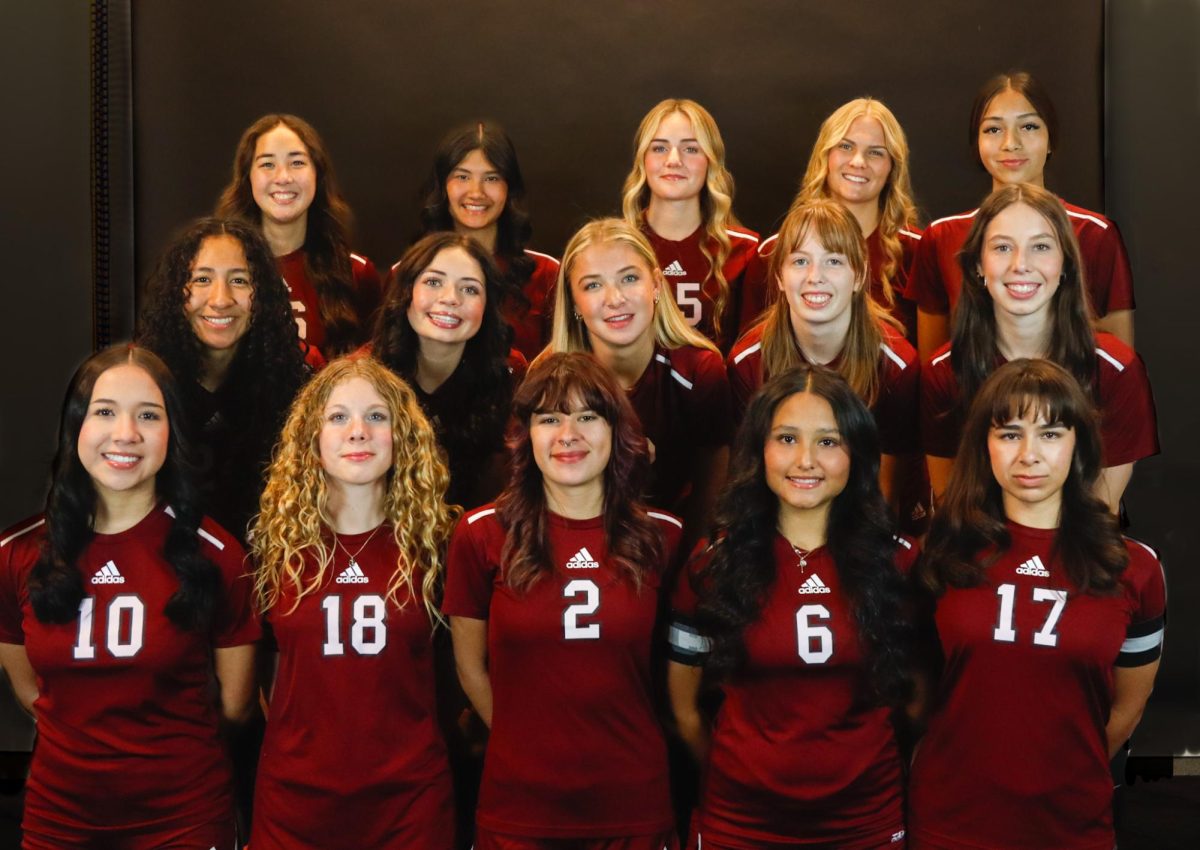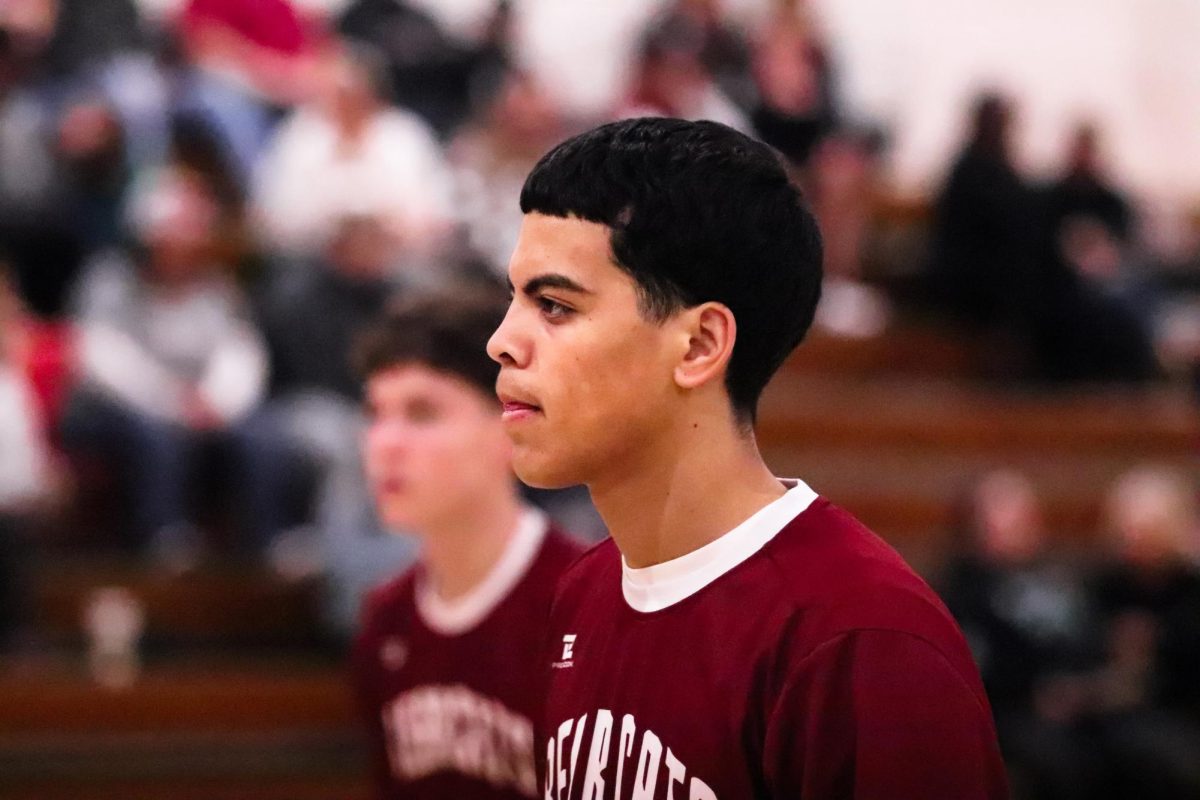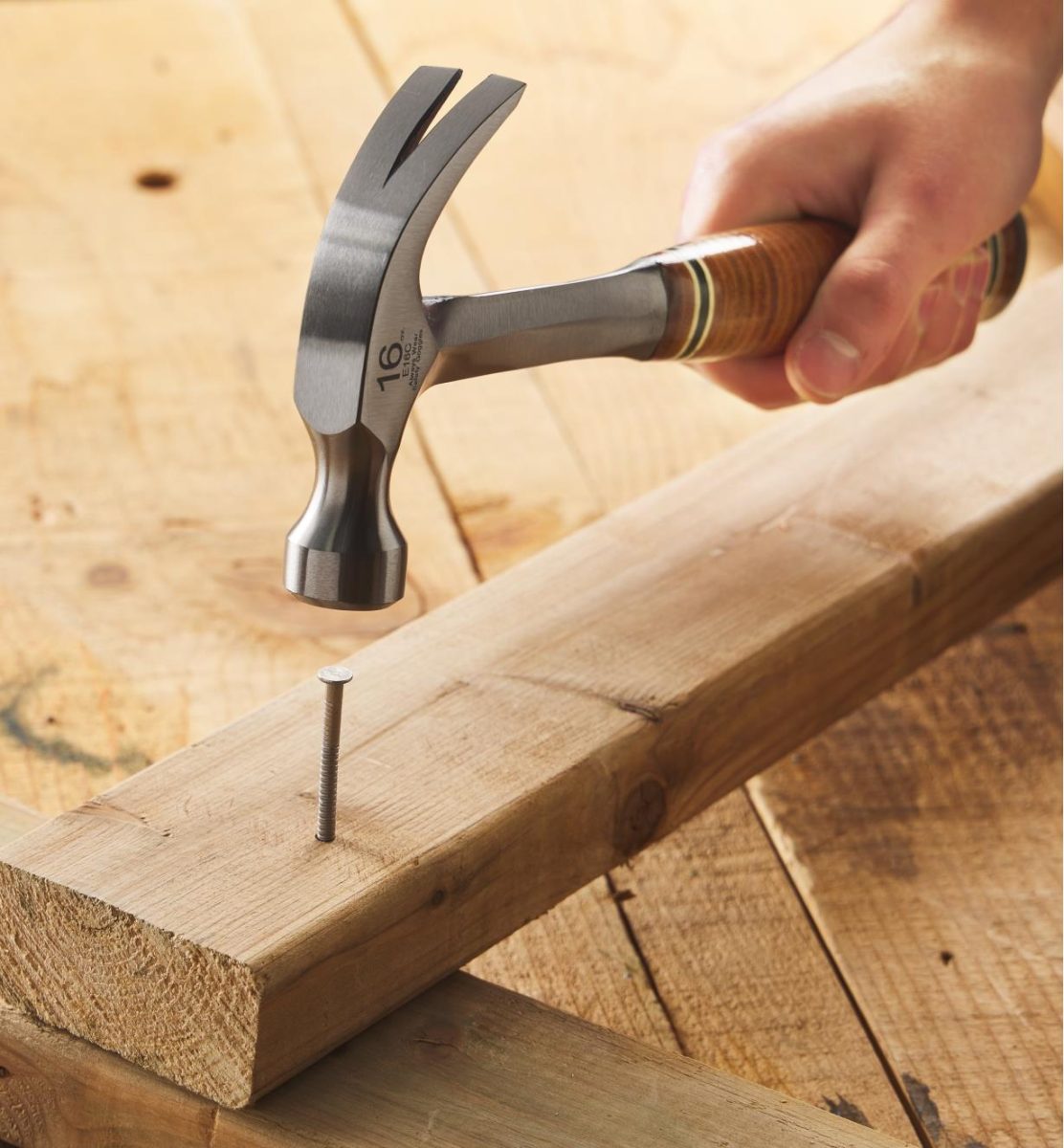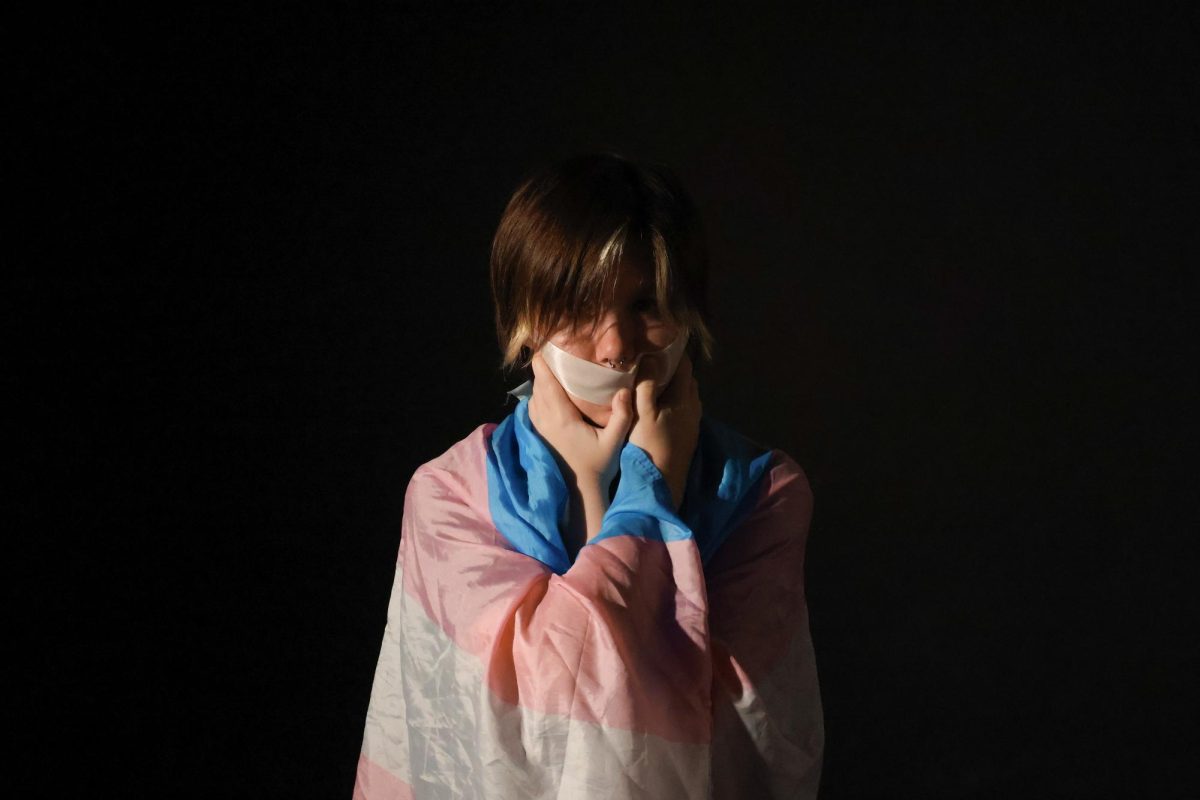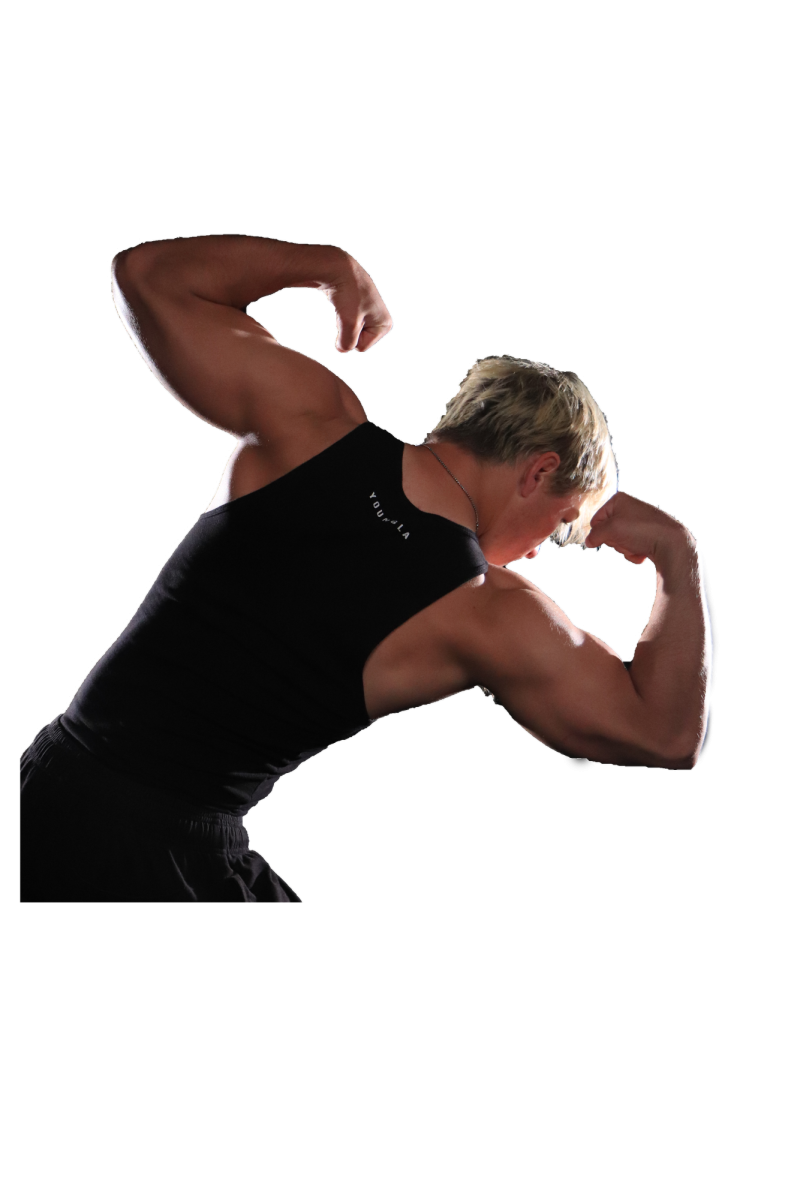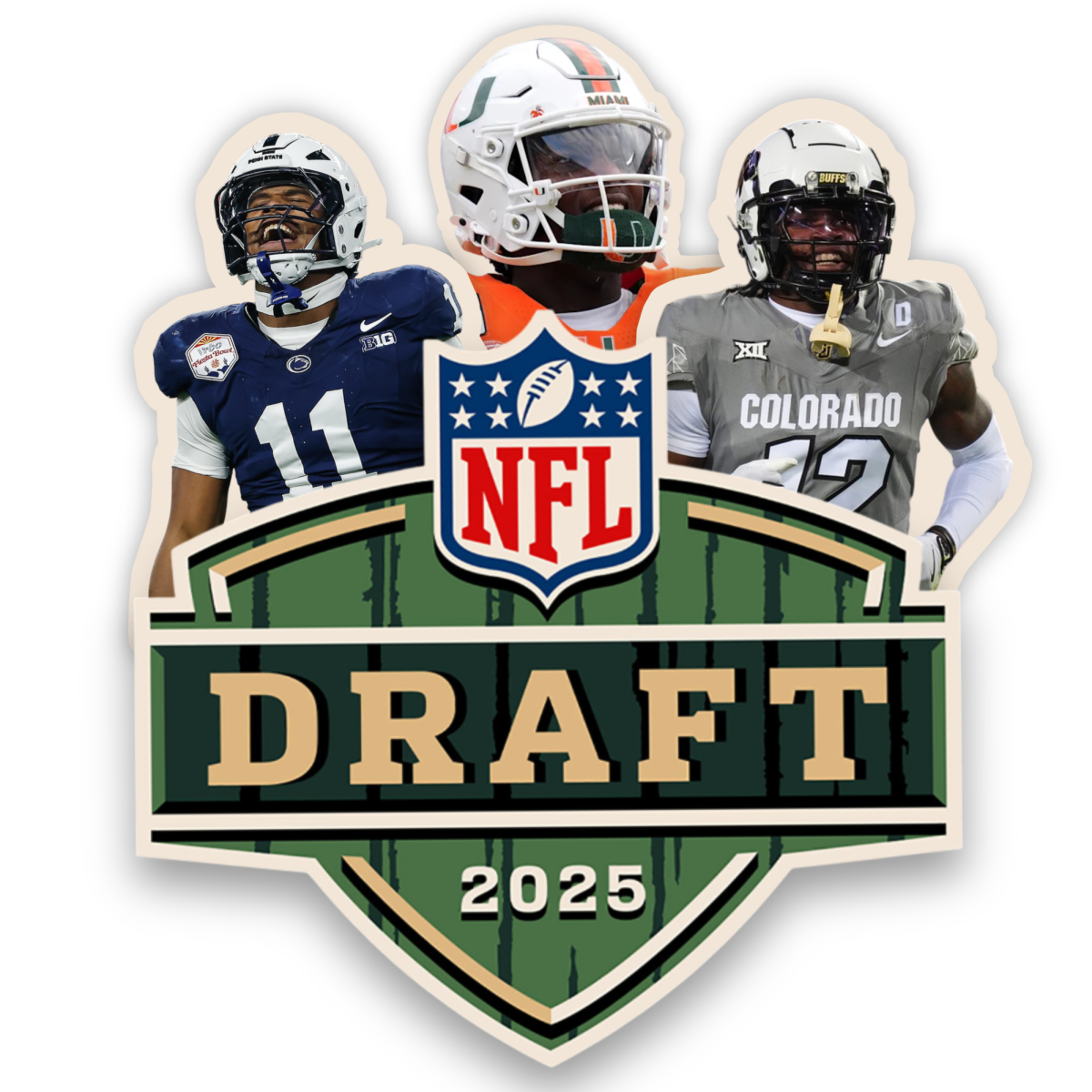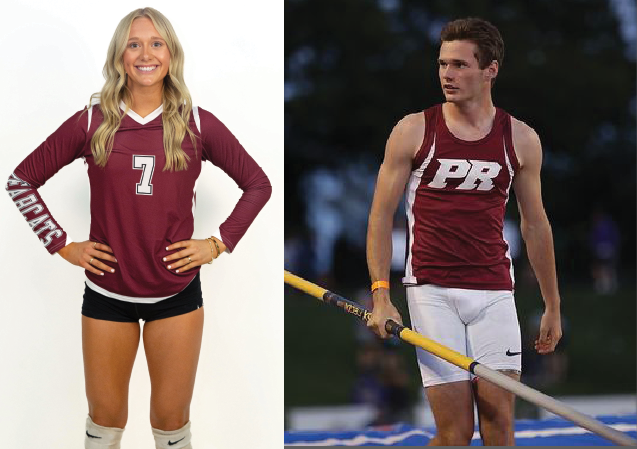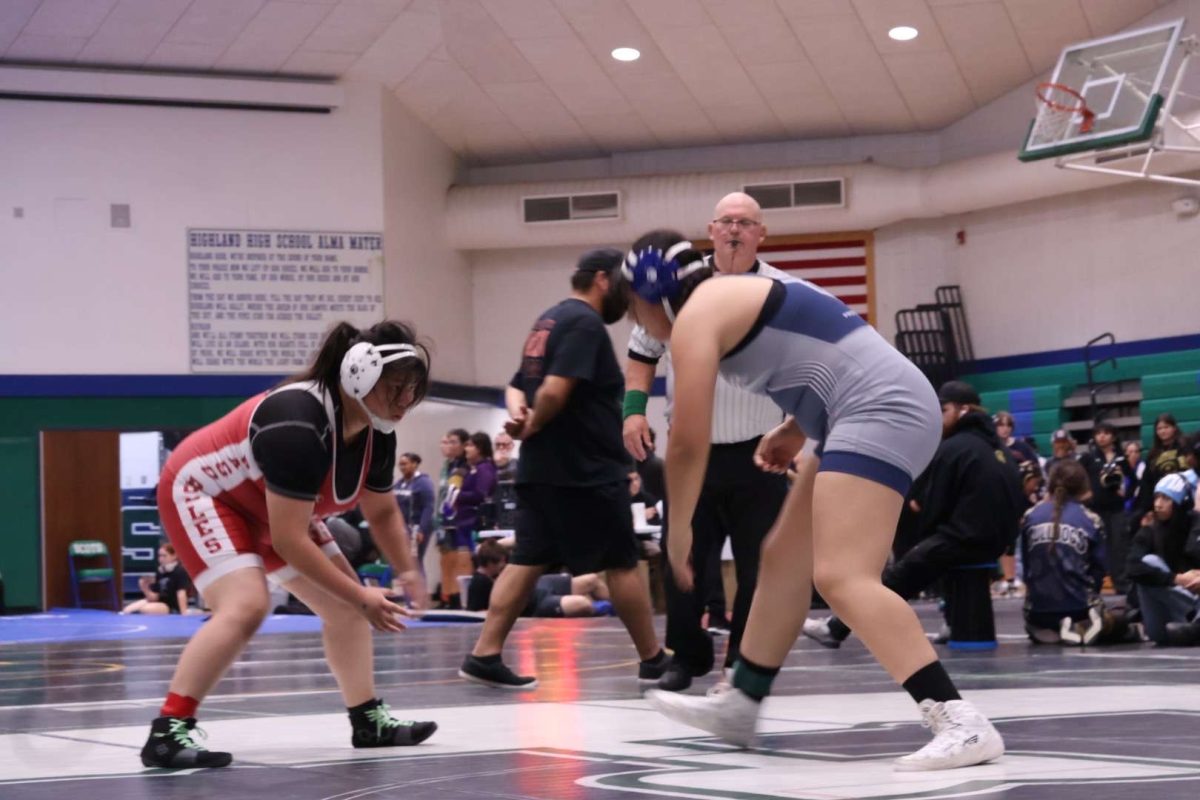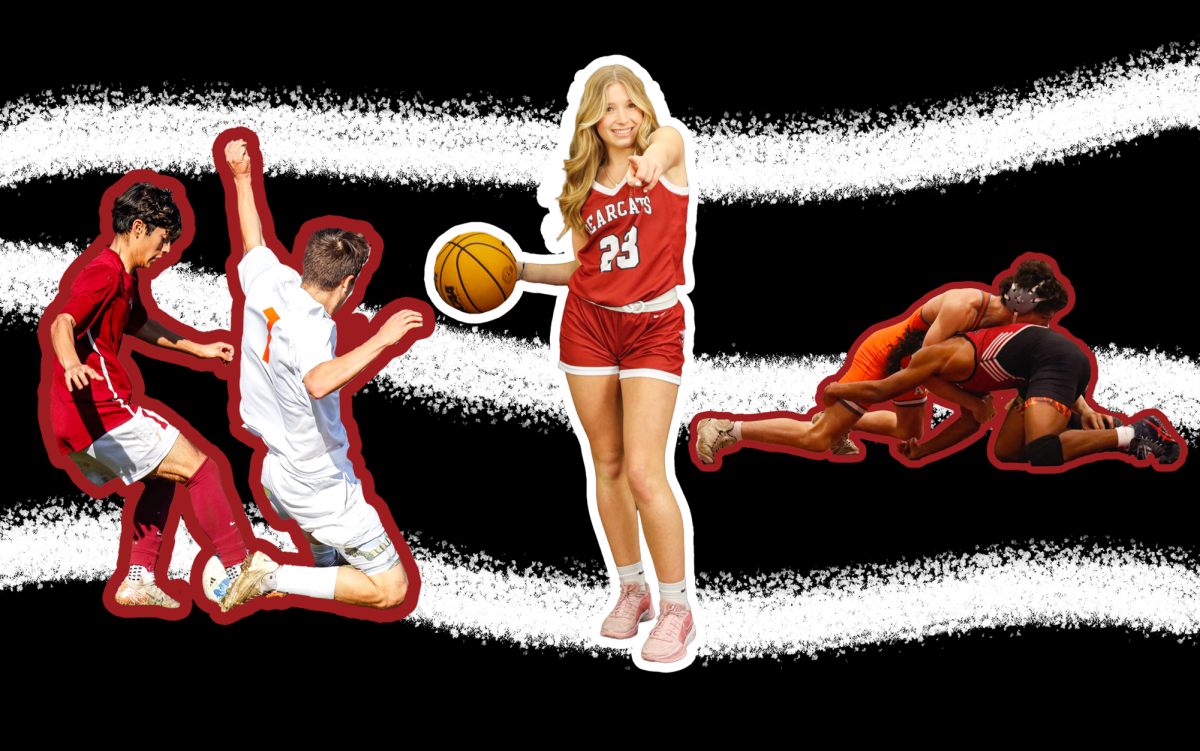A look into the often unnoticed hard work of cheerleaders
Cheerleading is a PRHS extracurricular with facets aplenty, each shining through their performances of dance, stunt, and weight-lifting on top of the social intelligence it takes to read a crowd in order to rally its excitement for a game and players.
Despite this varied effort, however, these hardworking students are often undermined for their choice of activity due to a perceived simplicity to it. To those in high school, cheerleading is somehow synonymous with the words “useless” and “easy,” and such thoughts are only bolstered by outside media, with cheerleaders most popularly being casted in movies and televison as either tragically stupid or demonically mean. Countless articles have been published online begging for some kind of recognition for cheerleaders, painting a clear picture of disacknowledgement among these girls. This lack of respect is reflected at PRHS, too; searching “cheerleading” on our Crimson website will yield one page of stories, and searching “cheerleader” only has about two stories more than that, an almost laughable amount compared to activities like Football, Basketball, Volleyball, and Waterpolo, all of which have six to eleven pages of results. Ironically, it seems as though the cheerleaders are in need of cheering, too.

JV Cheerleader Mackenzie Ruppe, 10, is no stranger to hard athletic work, breaking a school swim record in 2020, but has stayed cheering since middle school, and asserts that it’s more work than one might think.
She dedicates about eleven hours per week to cheer, though that number can fluctuate based on what games they have to cheer at.
“People just make comments about us not working hard,” she said, “(they) don’t take us seriously because we don’t compete.”
This thought, however, does not take into account the true point of cheer.
“The main of objective of cheer is to get the crowd involved in our athletics… (and overall) spirit,” Mia Lojacono, 12, a varsity PRHS cheerleader said, and that is exactly what they accomplish with every game.
“Since we are cheerleaders, we really do have to lead the crowd in motivating our teams to win,” Lojacono said.
She has observed the less-than-ideal social dynamics around cheer, noting that these girls “get a bad rep,” but reiterates the importance what cheer has done for her.
Though she originally joined to accompany a friend, Lojacono stuck with it throughout all her high school years.
“I really like the structure… (and have) enjoyed working out with my team,” she said. “Cheer has high expectations, (and) it’s definitely helped me better myself.”

Grace Nelson, 12, also found that cheer has greatly altered the course of her life, having first joined the activity when she was in kindergarten.
“I’ve always been drawn to the idea of being a leader… not only for my teammates, but for the school as well,” Nelson said.
She has participated in a multitude of events that she otherwise would have been unavailable to her, including making the All-American cheer team all four years, which allowed her to most recently attend the 80th annual Pearl Harbor Memorial Parade in Hawaii.
Nelson is also one of the cheer captains at PRHS.
“Being captain is more than just a title. It’s being someone who your teammates can come to (during) big or little situations. (It’s) really allowed me to be a voice for my team.”
And she’s not the only one who puts in the work. For every cheerleader, JV to Varsity, Cheer coach Tori Loney places a lot of emphasis on effort and dedication, describing it as a “necessity for cheer.”
“We’re here summer, fall, winter, spring, summer again… We don’t get to take a break. (We have to) keep that momentum going all year long,” Loney said.
Tori Loney
Cheer coach and athletic Director
Started cheer in her freshman year of high school. Has been coaching for 20+ years. More information here.
She’s referring to how the girls cheer for both fall and winter sports, sometimes spring, and how many cheer leaders participate in stunt. Then, practice for the following season starts in the summer, marking the activity as year-round for most girls. To make things even more intense, Loney marks the time commitment during basketball season around seventeen hours. Practices consists of lifting girls, practicing stunts, cheers, and making sure all of this work is done with great precision, as cheer can be highly dangerous, making up for 50-66 percent of catastrophic injuries in female athletes.
“It’s well worth it….” Loney said, “When we look back at the end of a season, we think, Look where we started and look at where we are now. It’s awesome, (and) such a great lesson to learn.”
Ultimately, cheer is more akin to any sport on campus than some would like to admit: The participants put in hard work and depend on each other in order to reach their goals and better themselves, just like any physical team. Those goals may be different than other athletic groups one might think of, but, ultimately, cheerleaders still deserve just as many stunts and jumps and enthusiasm as they give out.















(Photo credit: @prhscheerandstunt on Instagram, Mia Lojacono, Kalista Peterson, Mackenzie Ruppe, and Kalani Gaviola)

